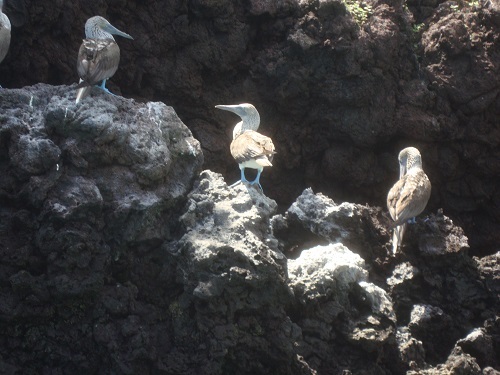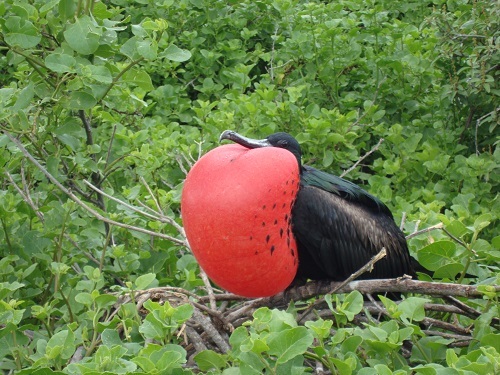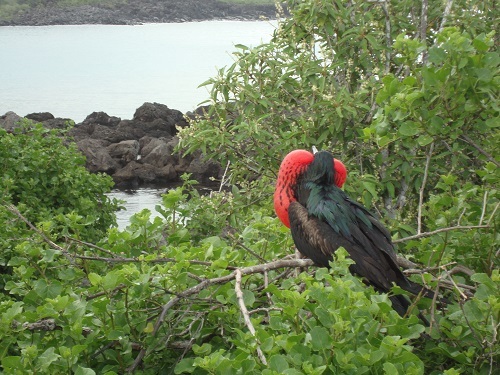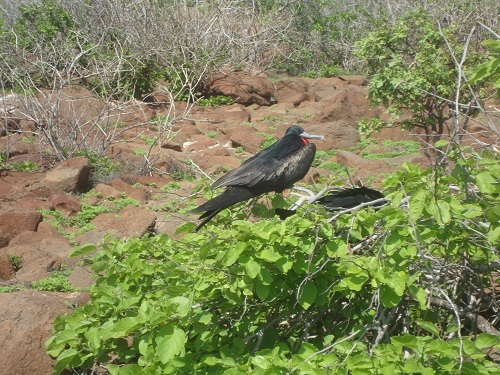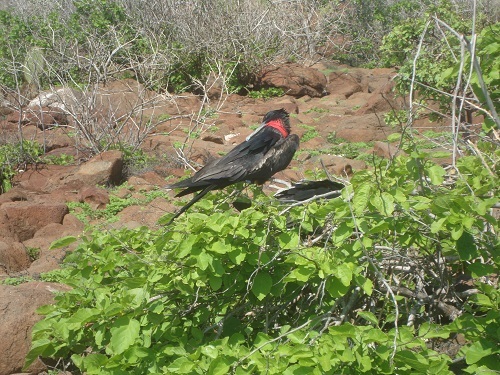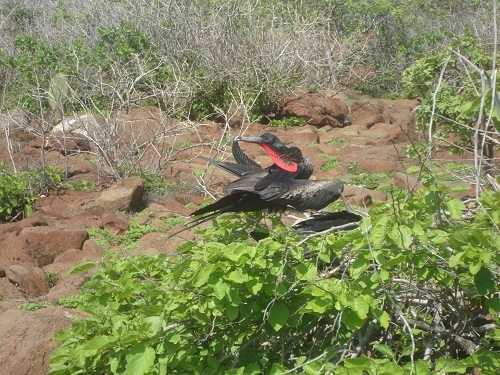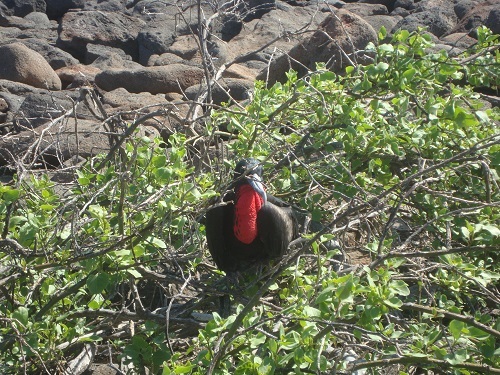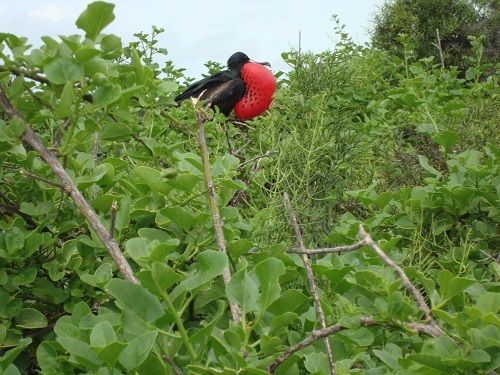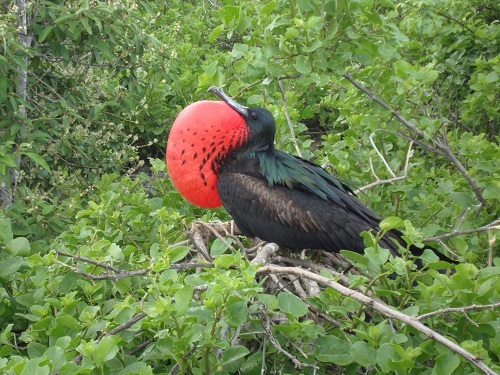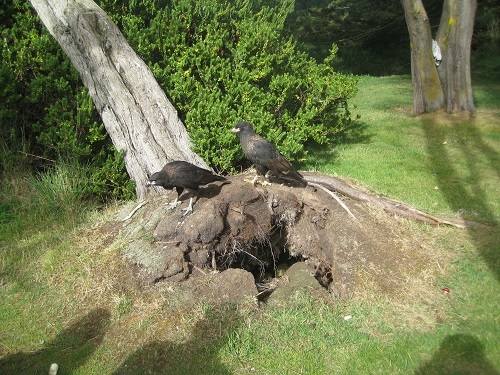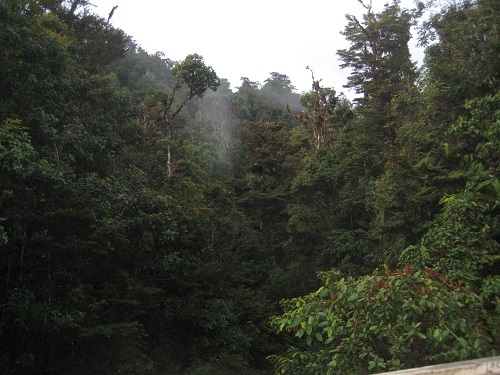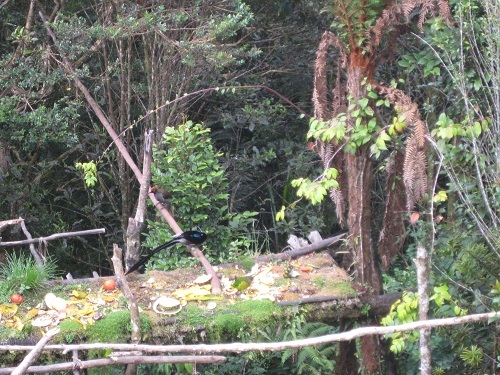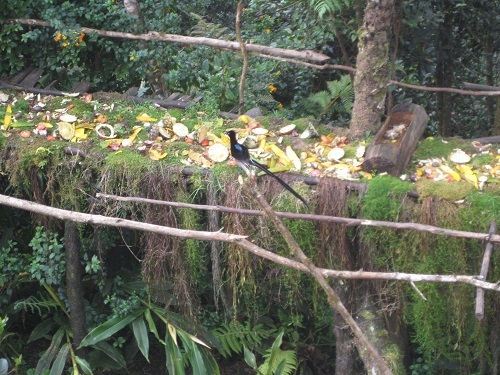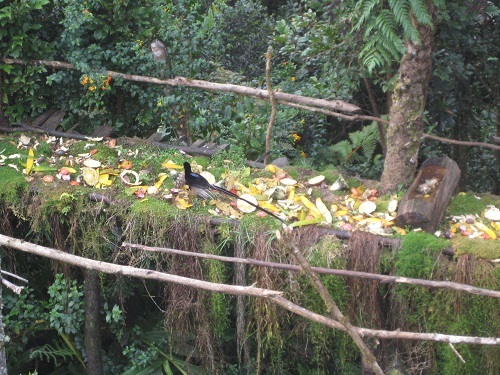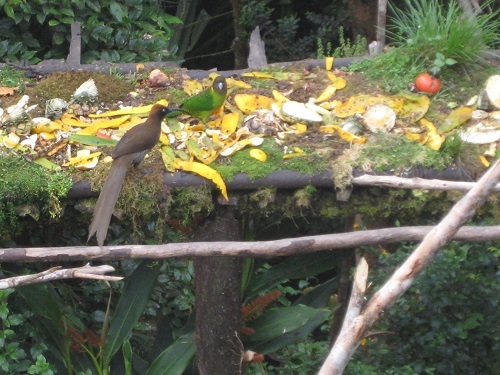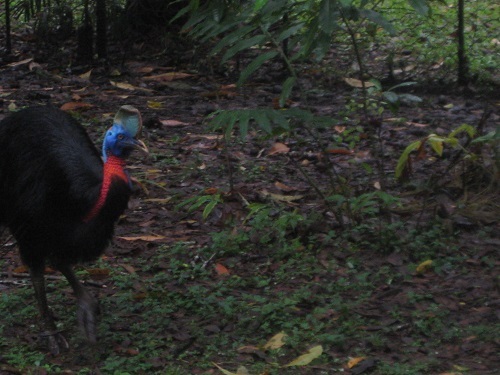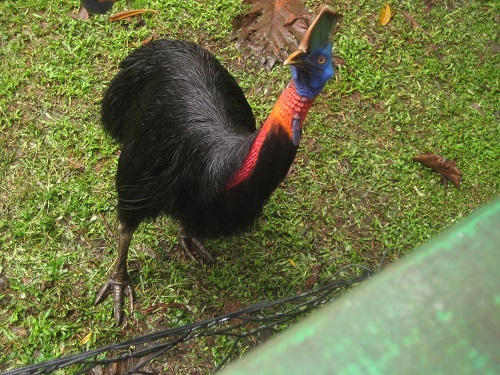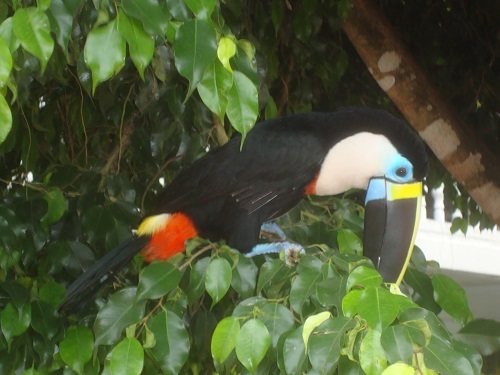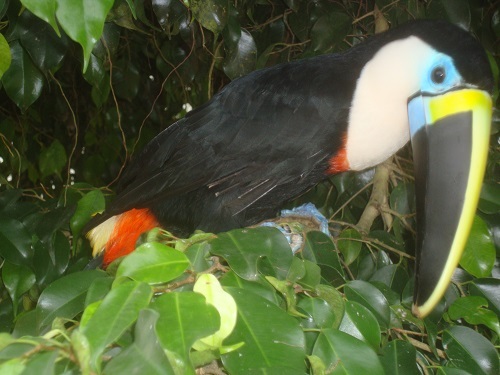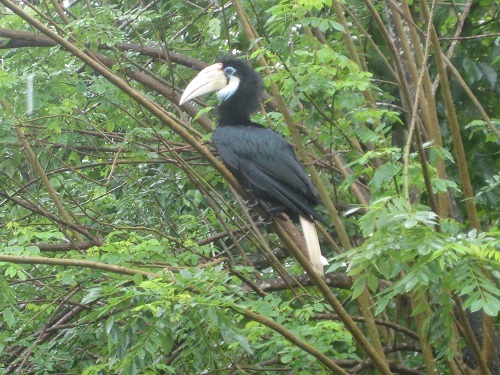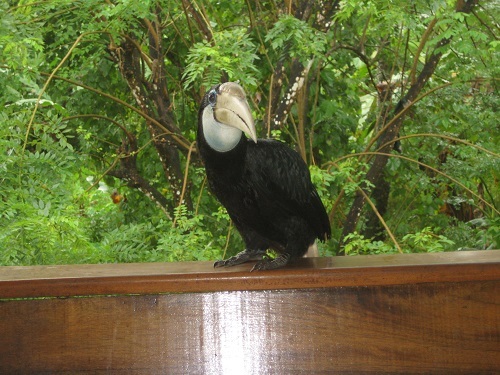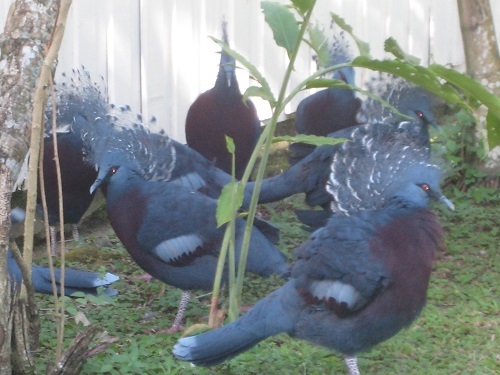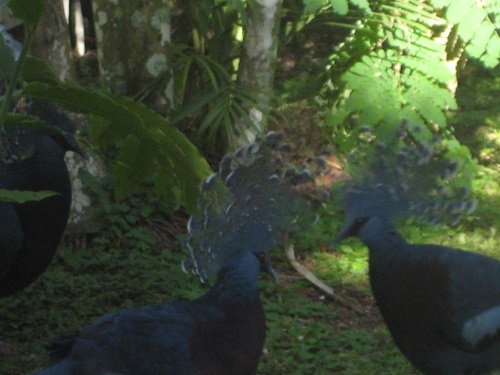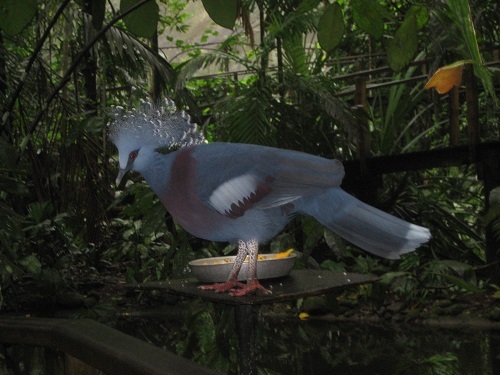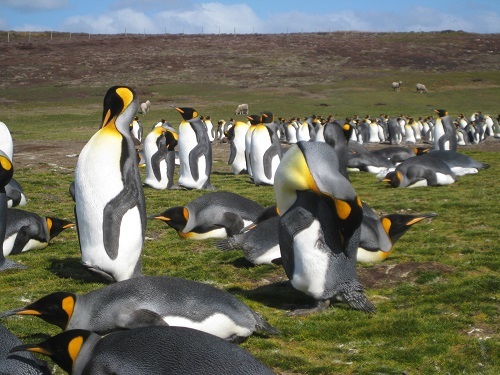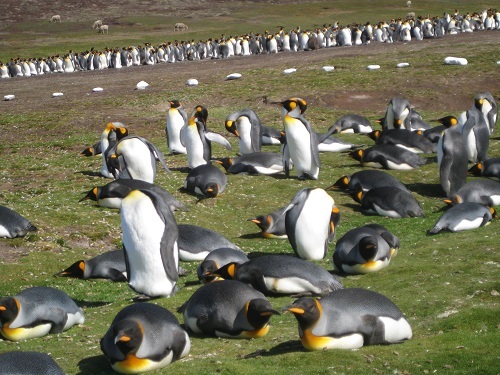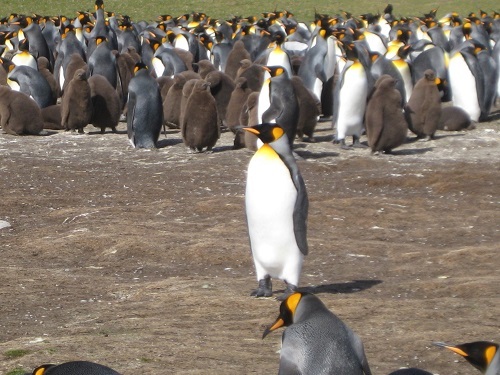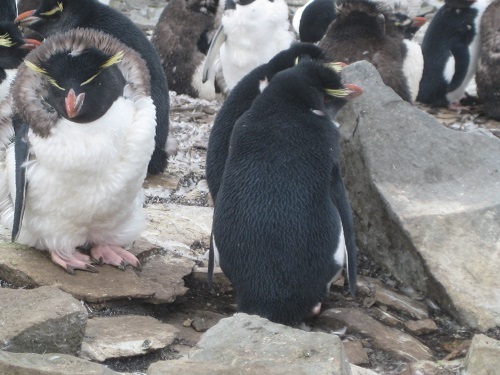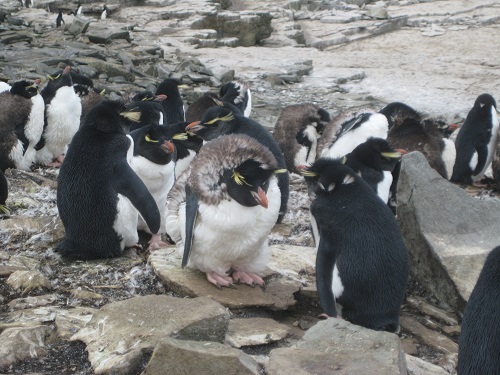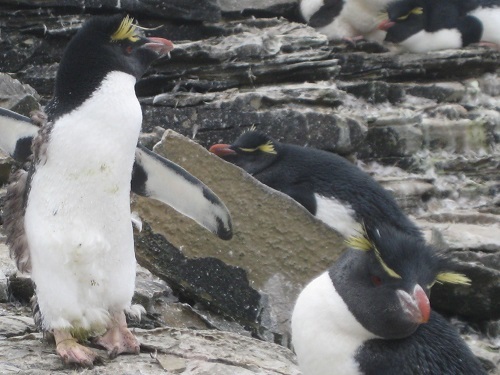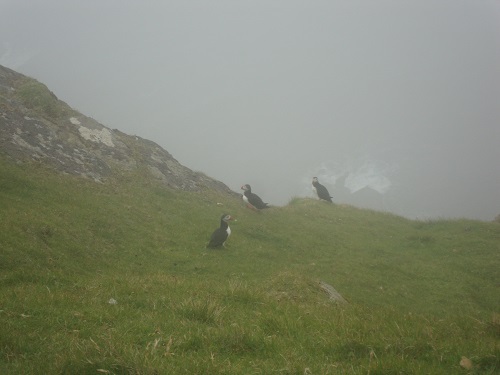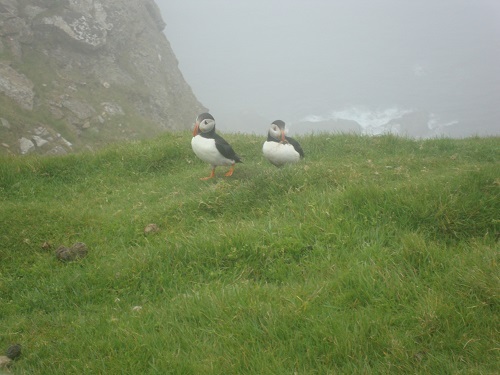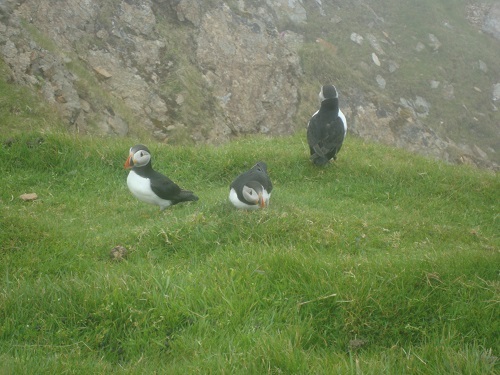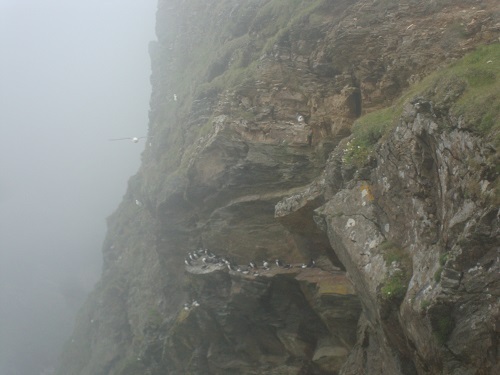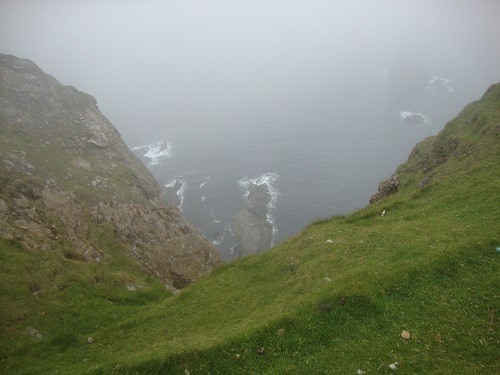I love birds. It's just birders I have a problem with. I can't seem to empathise with their ardour, focus, totally singular concentration - and total lack of 'come on now, crack a smile!' And that's without mentioning the Hubble Space telescopes they always seem to bring with them - or their looks.
Have you noticed that by dint of undiverted concentration over the decades, they've not only come to resemble the quarry of their heart's desires - beaked noses, pee-holes-in-a-snowbank eyes - they actually surpass them? They're more avian than their winged delights.
OK, after that introduction, here are just a few of the odder birds - non-human - I've met along the way.
The Frigate Bird
These mostly black tropical creatures can reach almost four feet in length with a seven-foot wingspan. But what most distinguishes them is the huge red balloon that males inflate below their beaks to attract the belles of the ornithological world when they're in heat.
Known as the gular sac, it requires a lot of energy and about eight hours to reach full inflation, and a pretty long time to deflate, too, when the wrinkled red skin sags beneath the beak in a serious case of brewers' droop.
Below, in both inflated and deflated mode, on Lobos and North Seymour Islands in the Galápagos.
The Johnny Rook or Flying Devil
That's what they call the Caracara, a member of the falcon family, in the Falkland Islands. A scavenger, with no noticeable fear of humans, whom he/she's quite prepared to face in a staring stand-off, it is basically black and distinguished by a brilliant yellow growth pushing through the breast feathers like a large egg yoke.
I hunted through a zillion sites on the web, and couldn't find one reference to the bulge, let alone a name. But you'll see it not only on the photos below from Carcass Island, but on Google images and elsewhere.
Birds of Paradise
From Flying Devil to Birds of Paradise! These magnificently plumed and coloured creatures with complexly intricate mating dances are a true marvel with their inordinately long tails, ruffs and other appendages. They can be found only in New Guinea.
They perch at some distances, necessitating binoculars and zoom lenses. The most exotic I've seen is the King of Saxony near Tari, in the Western Highlands. He's only about nine inches long and is brown and yellow, but he has two incredible two-foot long blue quills sticking out of his head, which he moves around, and back and forth, like rabbit antennae atop a TV set.
Needless to say, I fumble the camera - anyway the zoom is not strong enough to get him other than in a indistinguishable blur.
But some less exceptional birds of paradise flock to the Kumul Mountain Lodge amid the rain forest at the foot of Mount Hagen, in the Central Highlands, where a buffet table of fruit attracts them.
Here's a male sickle-beak with an enormous black tail and a fluorescent blue patch behind his head, and a female with a reddish head and a shorter but still long brown tail.
Of Helmets and Reinforced Beaks
Of all the birds with helmets I find the Cassowary, a magnificent ostrich-like bird with bright orange and red neck, the most striking - in more than one way. Smaller than an ostrich or emu, they reside in New Guinea and north-eastern Australia.
They have a greenish bone helmet on their heads, and a lethally razor-sharp talon with which they can kill humans with a single devastating kick to the throat, hence they're sometimes called the world's most dangerous bird.
Here are some from a nature reserve outside Lae, in Papua New Guinea.
Then there are the huge beaked birds from the multi-coloured toucan of the American tropics to the less ostentatious but no less hard-nosed hornbill of the Pacific tropics:
Toucan in the Ecuadorian Amazon
Hornbill at Alotau, Milne Bay, eastern Papua New Guinea
Of Crests and Fascinators
Princess Beatrice of York had to get a milliner to make her one for Prince William's wedding to Kate Middleton, but some avians have their very own fascinator born within their genes.
Take, for example, the Victoria Crowned Pigeon, again endemic only to New Guinea. Bluish-grey in colour, it has an amazing array of crown-topping blue crest feathers, themselves topped with white tips.
Birds in Tuxedoes
A few years back, I already devoted a whole blog to penguins at: http://www.huffingtonpost.com/mike-arkus/not-all-penguins-wear-the_b_4254161.html.
So here I'll only deal with two species - the King and the Rock Hopper.
The King Penguin, at over three feet tall the second largest after the Emperor, is very striking, with oval patches on the heads of various hues of yellow and orange, and similar markings on the neck. The chicks are huge balls of furry brown down, looking like bearskin hats for the Royal Guard, and they're very noisy, especially when nagging their parents for more food.
You can find them in Antarctica and neighbouring archipelagos, Tierra del Fuego and the Falkland Islands. Here's a colony in parliamentary session on East Falkland Island, some 40 miles from Port Stanley, the capital.
Rockhopper Penguins - yes, they do hop rocks - are much smaller, in fact they're one of the smallest of the species, but they're a remarkable sight with bright yellow stripes above their eyes from which equally bright yellow tassles stream.
Here's a colony on Sea Lion Island in the Falklands, continually arguing with each other and a-squawking, just like Ted Cruz and his ilk in Congress.
Of Aborted Landings
Puffins, yes puffins - along the track, the train came puffin'. These stocky, short-winged birds are quite comical with their white cheek panes, holding themselves almost upright like penguins. But have you seen them landing? God clearly had an aeronautically bad hair day when he created them. They sort of grind to a halt in mid-air, flapping their wings and plop down.
On the north-west tip of Unst, the northernmost of the United Kingdom's Shetland Islands, in Macbeth three-witches-worthy weather, they mass in the grey fog on a cliff-top, 1,000 feet above the raging ocean, busily collecting grasses to build their nests in old rabbit warrens, disappearing into the ground.
With their loping gait they're like clumsy clowns. One has just got into a fight with a tough stalk of grass it wants for its burrow. The stalk wins rounds one and two. The weather improves, some birders return and round three is interrupted as the puffins take flight. A technical knockout for the stalk.
The clouds lift and the outline of Muckle Flugga (you don't want to get involved in a spoonerism in that mouthful), the uninhabited northernmost point in the British Isles (apart from the Out Skerries) comes into view. The puffins abort-land further along the cliff away from the birders. Of course, my fumblings fail to get that - my hands abort more than the puffins' landings.
[Upcoming blog next Sunday: Animal Planet on the Looney Front - Sloths, Yes, but No Pink Dolphins]
______________
By the same author: Bussing The Amazon: On The Road With The Accidental Journalist, available with free excerpts on Kindle and in print version on Amazon.
